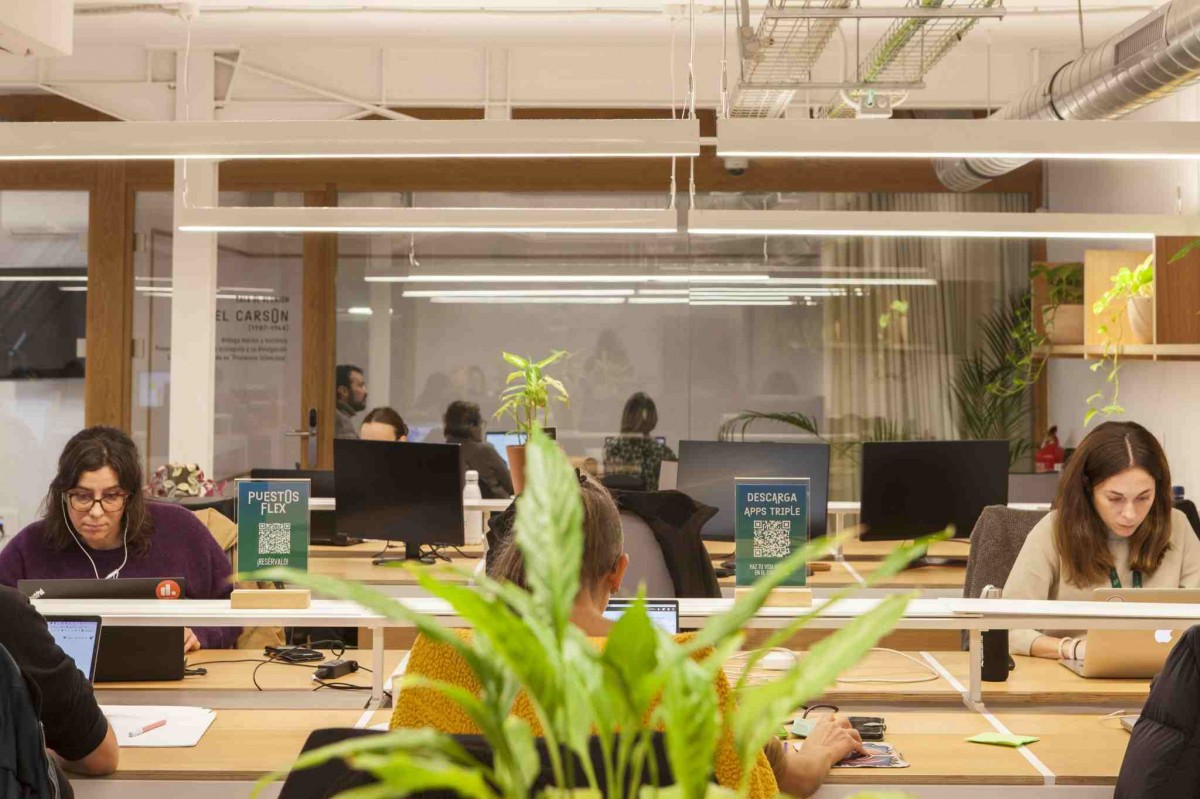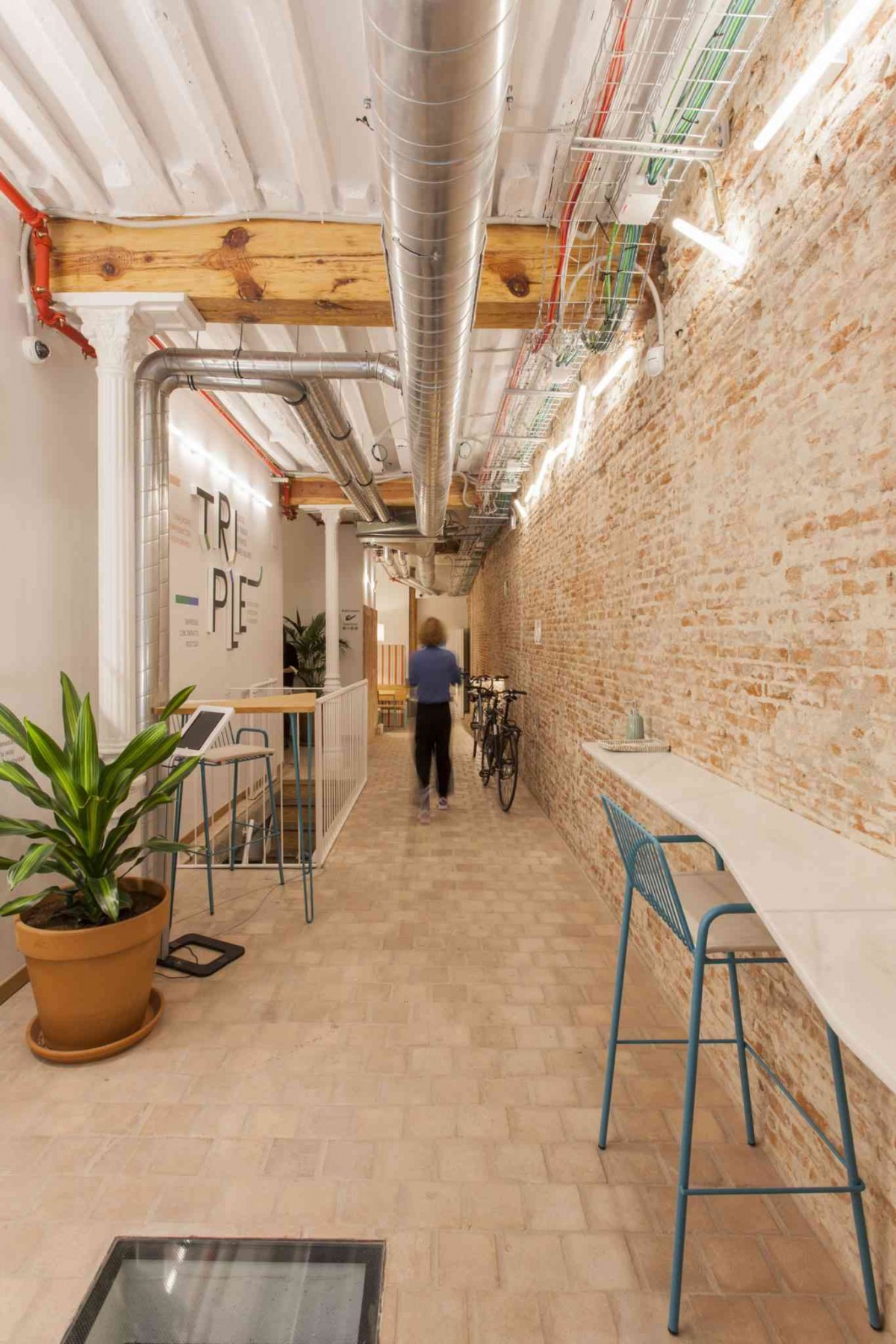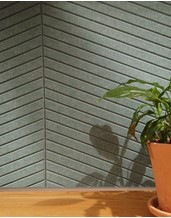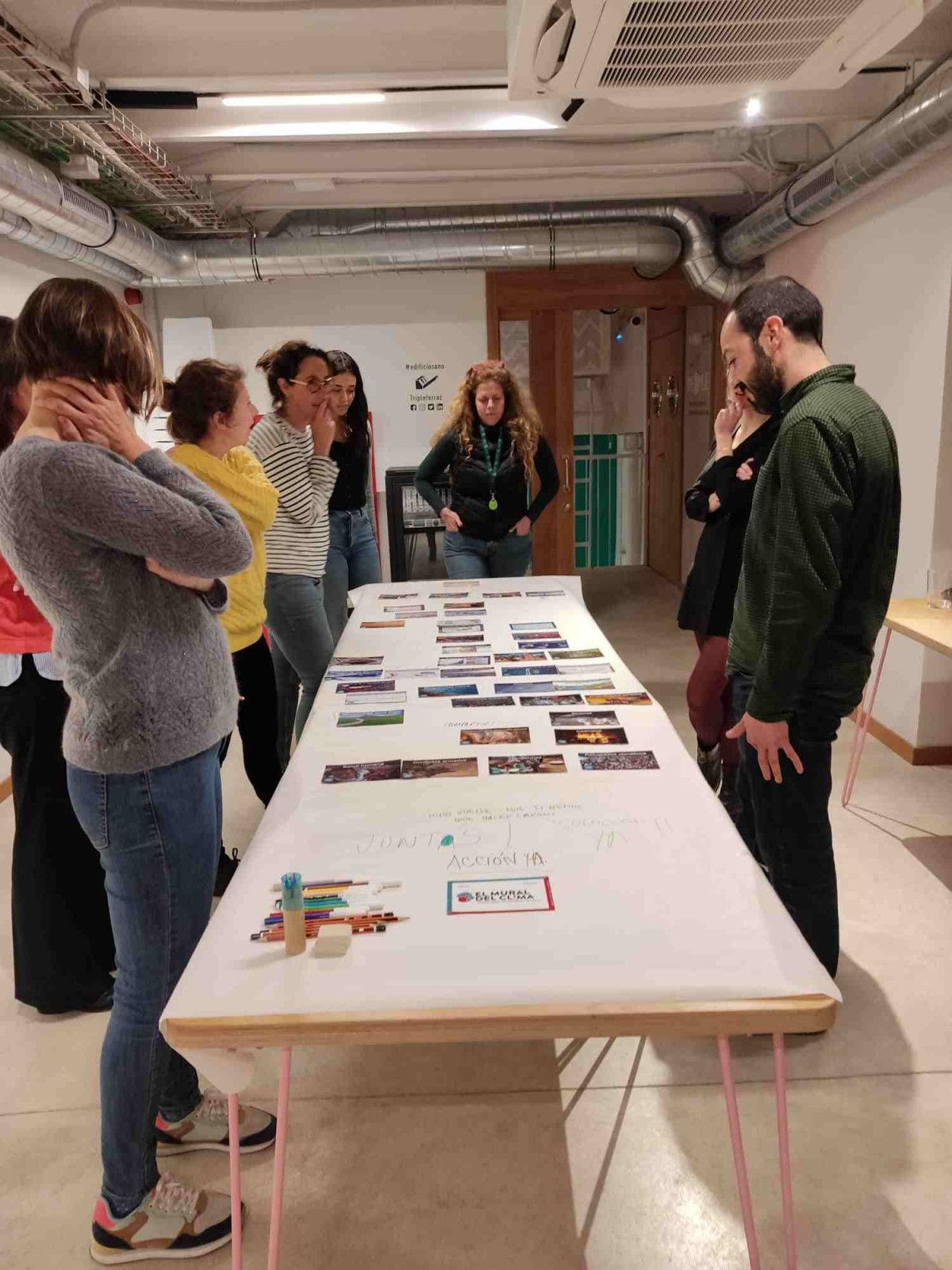Triple is a sustainably transformed industrial building at the heart of Madrid. It is used as an open workspapce for co-working and organizing events. It strategically employs architectural sustainable design to promote wellbeing in the workplace, with a particular focus on physical, emotional and psychosocial health.
Raquel Traba Galisteo, the CEO of Triple, commented on the idea of combining human well-being and greening in a creative co-working space that: “It's in our DNA. I mean, we are ecologists. We couldn't do it any other way. So it was like that or not”.
Triple respects human and planet health
Triple is a 600 square metre building that was renovated as a 'sustainable oasis' in 2020 by
SaTT, an ecological architecture studio. During the renovation, the building was measured using Ecómetro's Life Cycle Analysis tool and emissions were offset by reforestation. Passive house standards were followed, and panels of wood fibre and recycled cotton textiles were used for insulation. 100% of the electricity used in the building comes from renewable sources. The energy savings of 90% place Triple in the Nearly Zero Energy Buildings (NZEB) category.
The building's old materials have been retained, but the new ones have also been carefully selected for their impact and biocompatibility. For example, FSC-certified wood, fired clay or ecological vegetable paints and oils have been used, which are non-toxic and free of harmful chemical substances.
The furniture is connected to the ground dissipating all static electricity to the ground, as the design of the building has taken into account the reduction of electromagnetic pollution. The air is purified by mechanical ventilation, which brings in air from outside that has been previously filtered and cleaned. The presence of vegetation is intense in the building, balancing the relative humidity and increasing the level of well-being. The lighting is designed with people in mind, stimulating natural light and managing circadian cycles. The different workspace environments are zoned and insulated with recycled engineered panels for acoustic comfort.
A Worthwhile Investment
“During the renovation we had to make so many decisions about everything,” says Raquel Traba Galisteo. “We had to have an eye on every single thing. For example, to buy this table instead of the other one because the glue used in the other one is not ecological... so many detailed decisions we had to make. Fortunately, we had the support of this architecture studio, which has been pioneering green architecture in Spain for more than 20 years. One of the things that made it a bit difficult for us, because we wanted to trade responsibly, was the suppliers of the materials. We rejected the big suppliers like Amazon and looked for materials from local suppliers. If we couldn't find it with a local supplier, we simply changed the material”.
According to Raquel, the insistence on a substantially green and human- and planet-friendly renovation of the building increased the total cost by about 30%. The investment was financed only by private capital and bank loans. When asked if it was worth the effort, Raquel says yes.
“It is a 600 square metre building with very low energy consumption. So there is a significant reduction in running costs. Maybe not so much in one year, but in the long term, in 20 years, it is worth it. In addition, it seems that in three years' time, because of European regulations, no office, no building, no company will be able to make a choice other than eco or something very close to eco renovation”.
There is a significant reduction in running costs. Maybe not so much in one year, but in the long term, in 20 years it is worth it.
A Community beyond the building
In addition to creating an ecological and humane working environment, Triple's managers have tried to create a community of people in this co-working space who share similar visions and concerns. “We are like a family,” says Raquel Traba Galisteo. “We organise meetings, we do yoga together, we have aperitifs sometimes and we start talking in a very friendly atmosphere. People get to know each other and in a very short time they make friends. They also meet outside the room. If someone goes for a coffee, they are likely to start talking to someone else. It is a very comfortable and relaxed environment.”
As Raquel describes it, the building accommodates 55 people a day in open-plan workspaces on three floors. “There are a lot of architects, maybe because the place is curated and beautiful. People who consult. There is a journalist from France who works on the quality of the oceans. People who do different things, but all linked by the ecological idea,” concludes Triple's CEO.
“We are like a family. We organise meetings, we do yoga together, we have aperitifs sometimes. It is a very comfortable and relaxed environment.”
People are not tired at the end of the day
When asked if people appreciate working in a healthy building, Raquel says: “People feel it. When you're in a place like this, at the end of the day you're not tired because of the lighting, because you don't smell chemicals, because there's no electromagnetic pollution. All these intangible things that people don't see most of the time help them to feel well. People see that it's nice, they like it, but they don't dig deeper. But when you ask them at the end of the day how their eyes are, for example, they say 'I'm not tired' and that's true”.
“People feel it. When you're in a place like this, at the end of the day you're not tired because of the lighting, because you don't smell chemicals, because there's no electromagnetic pollution".
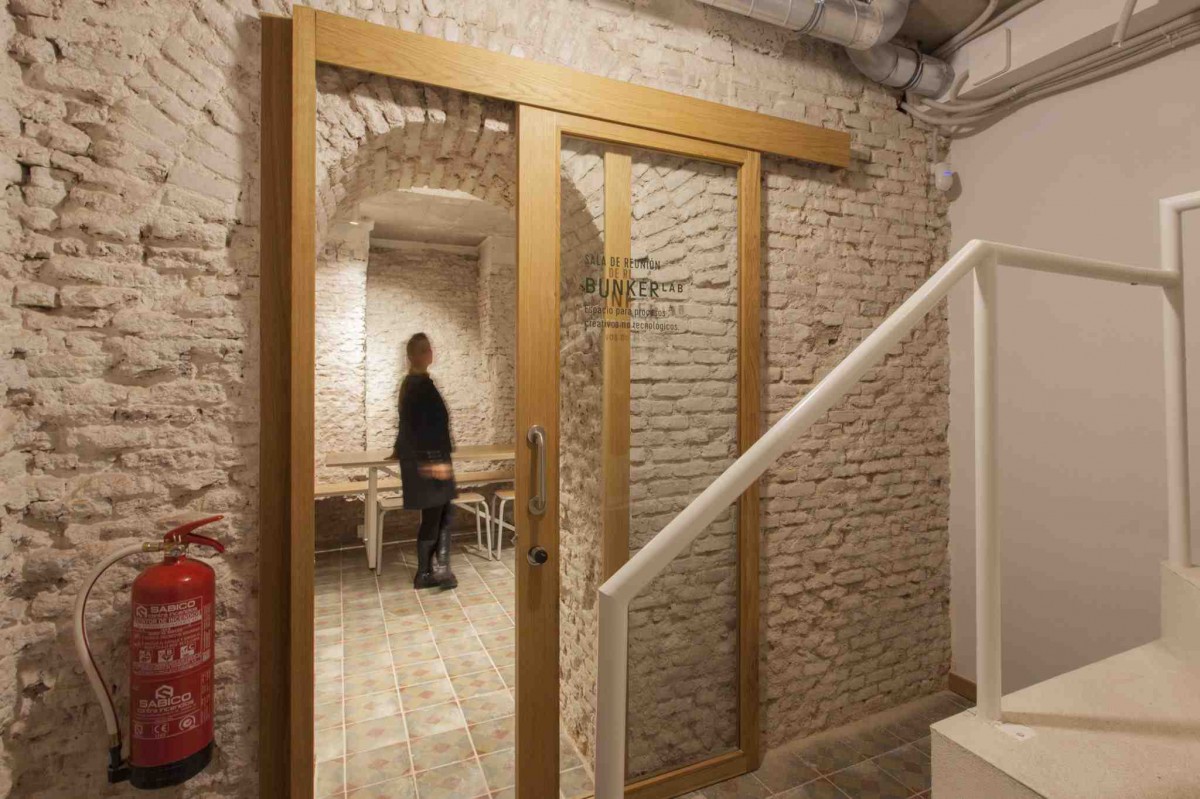
Photo of Raquel credit: Ilias Maroutsis
This Case Study was created under Creative FLIP, an EU co-funded project aimed at further increasing the long-term resilience of the CCSI in key areas such as Finance, Finance, Learning, Working Conditions, Innovation & Intellectual Property Rights. Key Takeaways
- The long-term reduction of running costs makes worthwhile the 30% increase in the investment for the building's planet and human-friendly renovation.
- Architecture design for sustainability benefits people's wellbeing, as they do not feel tired after a day's work.
- Benefits include the development of a community of creatives, attracted by the new building.








